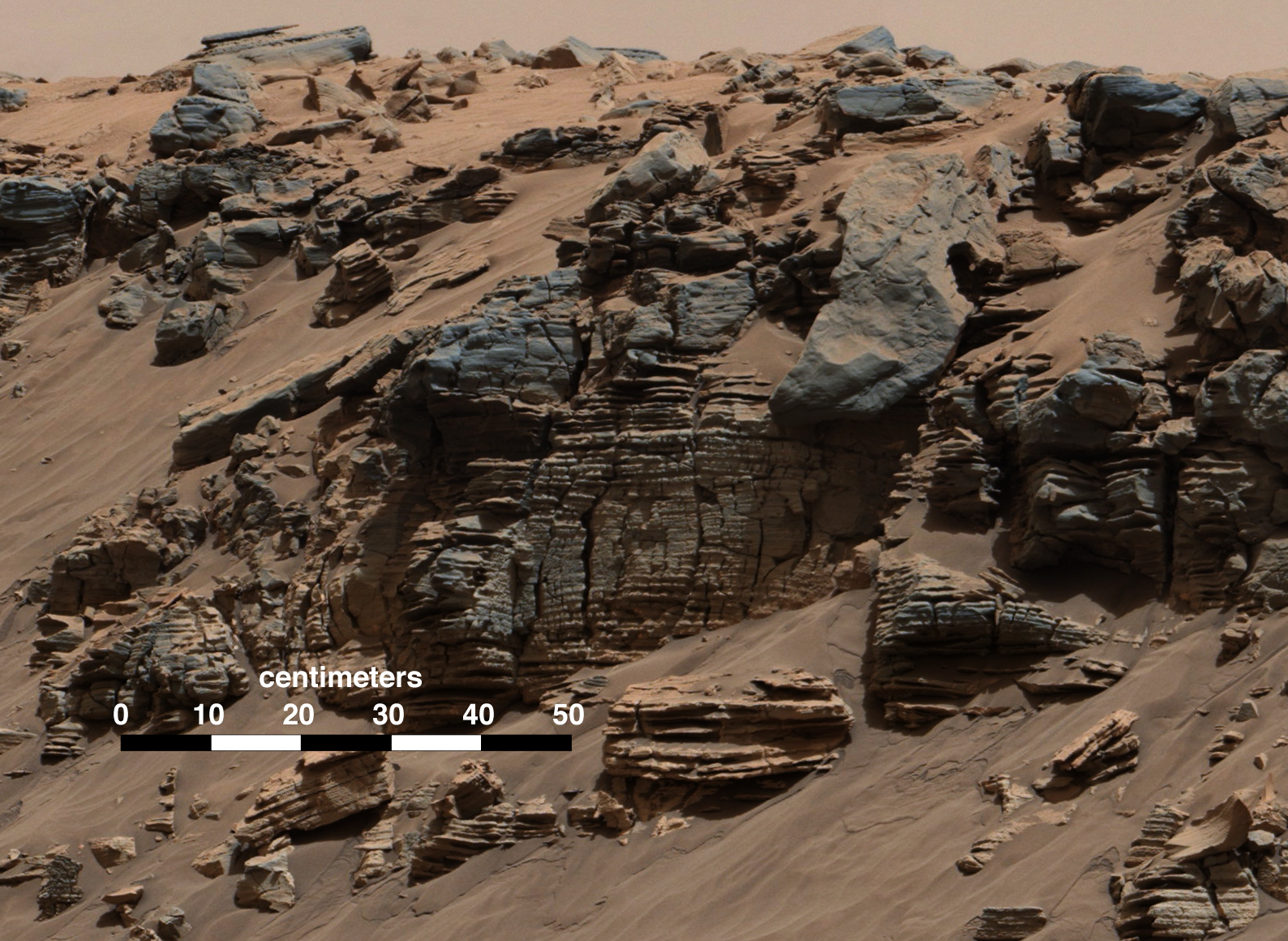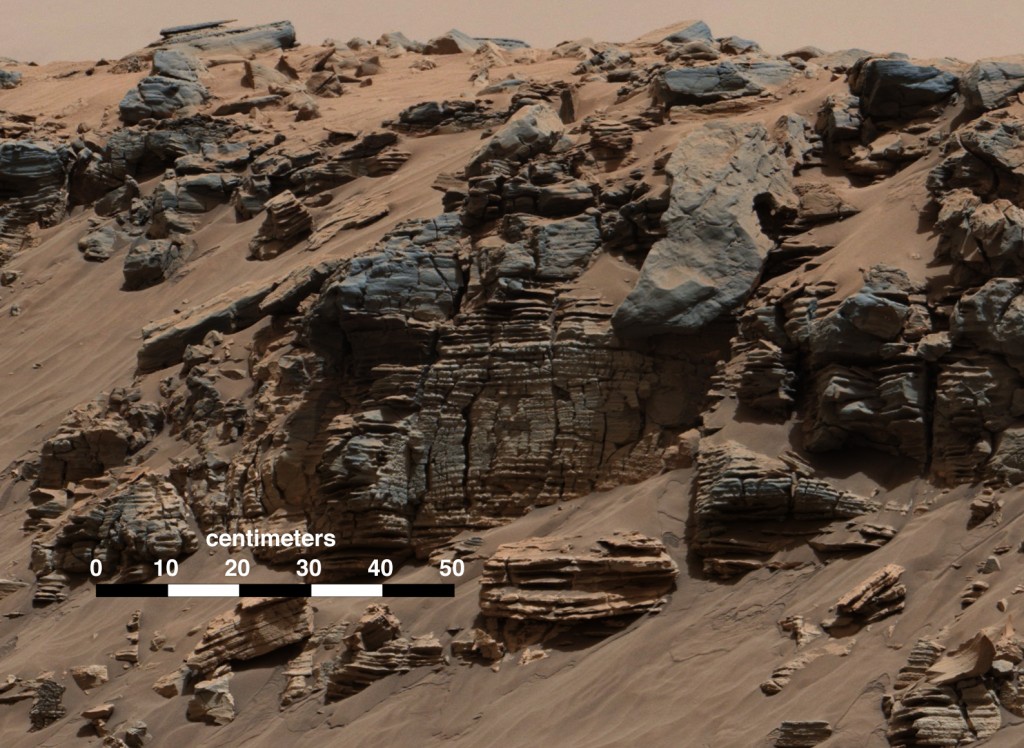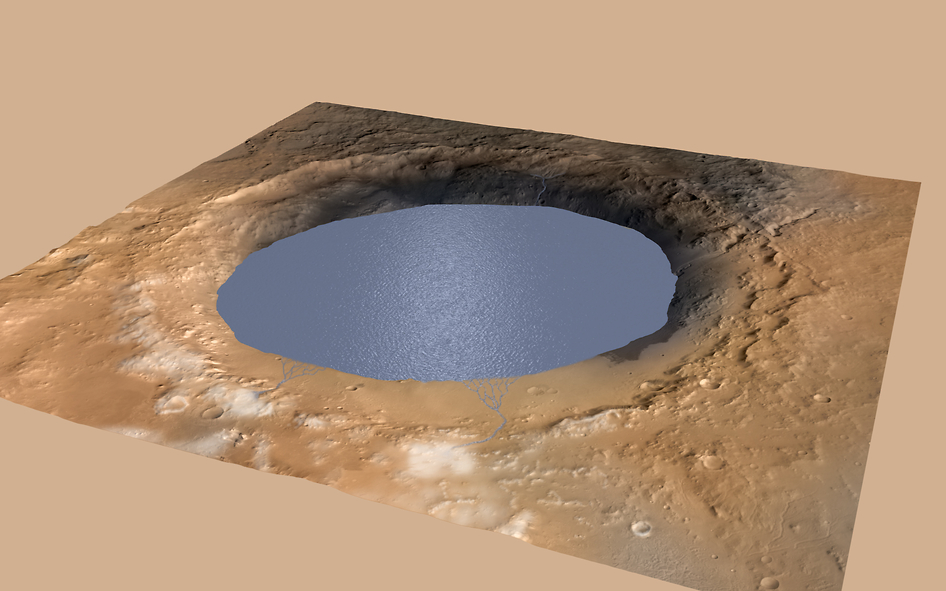December 9, 2014 – NASA in its latest Curiosity report is painting a picture of the Mount Sharp setting a few billion years ago. And it is a wet one, in fact so wet, that much of the mountain at one time was underwater. The picture is not of a transient wet period but of cycles of warm and wet conditions.
Considering the present state of the planet how could this be so? The Jet Propulsion Laboratory scientists have put together a hypothesis that Mars had a much thicker atmosphere in the past with temperatures well above freezing globally. They have yet, however, to understand the mechanism that could of caused this considering the orbital location of the planet as beyond the outer edge of what is described as the Goldilocks Zone.
What has changed the scientists mind about Mars’ wet period? The robot rover which first landed near an ancient river bed has been traversing the Gale Crater bottom and is now in the foothills on the edge of Mount Sharp. Here it has transitioned into an ancient wet environment with evidence of not streams but a lake and river delta/ That evidence appears as numerous layers of sedimentary rock (see image below) that could only have been laid down at the bottom of a lake over substantial time. The sediments in the picture lie 150 meters (500 feet) up the side of Mount Sharp. Evidence of interspersed dry periods can be seen in wind erosion patterns within the sediments. This indicates that in this region of Mars there were lakes that refilled and dried up over a very long period of time. Previously the wet period of Mars was believed to have been very short lived. Not any longer.
How deep were the lakes in Gale Crater? At least several hundred meters according to Project Scientist, John Grotzinger, who states, “The great thing about a lake that occurs repeatedly, over and over, is that each time it comes back it is another experiment to tell you how the environment works…..As Curiosity climbs higher on Mount Sharp, we will have a series of experiments to show patterns in how the atmosphere and the water and the sediments interact. We may see how the chemistry changed in the lakes over time.”
The picture below is a simulated illustration of what Gale Crater Lake may have looked like on Mars. Note the runoff from snow melting on the crater rim forming streams and deltas on the edge of the lake. If the lake filled the entire crater it would have been 154 kilometers (95 miles) in diameter. The illustrator is showing the lake level approximately where Curiosity has discovered the sedimentary layers deposited in the deltas as the water entered the lake. The only thing missing is Mount Sharp itself. The evolution of the mountain is still not fully understood. Was it formed by rebound from the initial impact or did it accumulate and grow over time? In any case the mountain would probably appear as an island at the centre of the lake.



















[…] sure it changes much. It’s been understood that the planet was once wet, that it was wet for hundreds of millions of years (if not a billion or more), and that the environment was once life-friendly. This […]